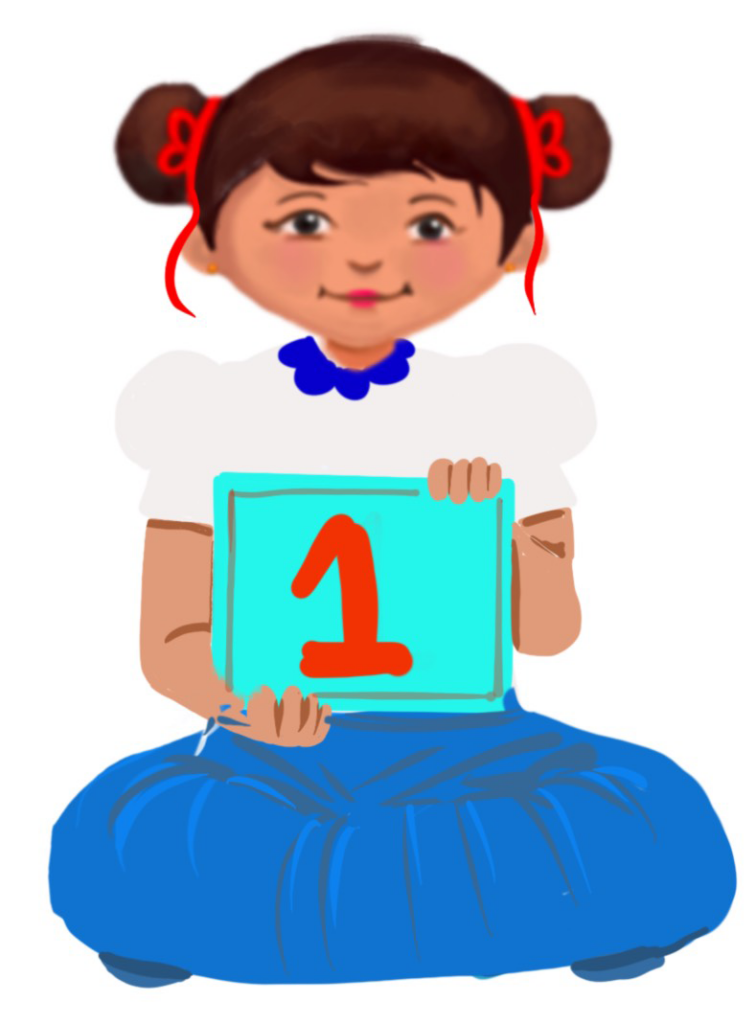
Colouring Hand & Finger Print Painting-Hen and Chicks
Class 1
 Objective
Objective
Students will be able to dip their hands and fingers in paint and make figures of hen and chicks.
 Prerequisites
Prerequisites
1) Fine motor skills: Children should have basic fine motor skills necessary for grasping small objects like paint brushes, sketch pens and palettes.
2) Hand and eye coordination: Children must perceive the location of the canvas or worksheet and then coordinate their hand movements to apply the paint in the desired manner.
3) Hand strength: Children need to have sufficient strength in their hands to hold paints, palettes or squeeze the paint tubes.
4) Attention and focus: Children should have the ability to focus on the task and complete it. Painting sessions therefore should be short and engaging with breaks so that attention is maintained.
5) Visual discrimination: Children should have the ability to differentiate between various colours of paint and make decisions about which colours to use for their artwork.
6) Spatial awareness: Children should be able to perceive how the movement of their fingers or hands will create the desired shapes or patterns on the painting surface.
7) Visual closure: Children should have the ability to mentally complete or fill in the missing parts of an image. This skill is important to recognise and interpret the overall composition of the artwork, even when certain areas are incomplete or partially covered by paint.
8) Follow simple instructions: Children should be able to understand and follow simple instructions. Always use clear and concise language.
NOTE: Adaptations, Variation in Rules and Pace are suggested below to develop the above prerequisites.
 Goal
Goal
All
All children can identify the figure and complete the activity with peer help or with teacher’s help.
Some
Some children can paste in the right manner to complete the figure.
Few
Few children can dip their fingers in paint as required to paste on the worksheet to make a variety of shapes.
Operational Definition
All – This gives the goal, which is the minimum that the teacher must achieve for all students in the classroom.
Some – This gives the goal that the teacher may try to achieve for some students in the classroom who can achieve the suggested goal over and above the goal stated for ‘All’.
Few – This gives the goal that the teacher may try to achieve for a few students in the classroom who can achieve the suggested goal over and above the goal stated for ‘Some’ and ‘All’.
Materials Required for Activity
Brown poster or water colours, sketch pen, plate, a brush and a piece of old cloth.
Preparation for Activity
Preparing will help you to conduct an effective activity in an inclusive classroom and achieve the goal.
- Download the Hand print Painting – Hen and chicks craft worksheet provided with this.
- Please ensure that all children have the worksheet ready.
- Please keep ready the Adapted Worksheet as required for your Inclusive Classroom. Details of creating these adaptations yourself is provided below.
- Go through the suggestions provided for Variation of Rules and Pace and Adaptations and ensure necessary preparation accordingly.
Preparing will help you to conduct an effective activity in an inclusive classroom and achieve the goal.
Setting for the Activity
This is a classroom activity. All children can work on the worksheets individually. However, children who need peer support can work with their peers.
Procedure
- Teacher may first show the materials that will be used in this activity.
- Ask the children to identify the colour and the figures.
- Encourage and appreciate the children for their answers.
- Demonstrate how to spread a small quantity of the paint in the plate using a brush.
- Demonstrate how to dip the hand in the paint.
- Demonstrate how to print on the working sheet using the hand and fingers.
Worksheet A4: Hand print painting – Hen and chicks
View and DownloadEnlarged Worksheet: Hand print painting – Hen and chicks
View and DownloadFlashcards: Colour Flashcards
View and DownloadClick and watch the videos. These videos are to be shown to children before the activity. When there are children with hearing impairment in the inclusive class, use the video with Indian Sign Language (ISL)
Video: Hand print painting – Hen and chicks
ISL Video: Hand print painting – Hen and chicks
Notes to the Teacher
- Encourage and appreciate the children for their answers.
- Go around the class and ensure that the children are following the instructions correctly at each step.
- The teacher should identify the Hand dominance of the child and encourage the child to do with that hand
- Appreciate and acknowledge children’s effort.
Adaptations to address variability in an inclusive classroom
The variability of an inclusive environment needs to address the processing and attention differences among learners. An inclusive environment may include learners with visual impairments, hearing impairments, locomotor impairments and cognitive differences. Learners not only learn in different ways, but also possess unique motivations, interests, personalities and strengths. To address this variability, providing appropriate adaptations is an effective solution.
Adaptations and Strategies: Hand Print painting
Suggested Variation in Rules and Pace
When working with special children, it is important to adapt the rules and pace to their specific needs. Here are some suggestions:
- Vary the rules: Depending on the child’s abilities, you can adapt the rules for craft. For example, if a child has difficulty staying within the lines, you could allow them to paste freely or with a larger outline.
- Vary the pace: Some children may need more time to complete tasks than others. It may be helpful to break up the task into smaller parts, providing regular breaks or alternate activities to avoid frustration or fatigue. Using a timer can help children pace themselves and feel a sense of accomplishment as they work towards completing the task.
- Provide additional support: For children with fine motor difficulties, you can offer hand over hand guidance with verbal prompts. A reference for these adaptive strategies is provided in the Adaptations and Strategies Document.
- Provide positive feedback: It is important to provide positive feedback throughout the craft activity to build the child’s confidence and motivation. Be specific and provide feedback on their effort, progress, and the quality of their work.
Story – Always Stay United
Children can watch the video of the story on the importance of staying united at all times.
Video: Always Stay United
ISL Video: Always Stay United
Social Narrative – Making Craft
A social narrative is a tool used to help individuals with special needs, particularly those on the autism spectrum, better understand social situations and how to appropriately respond to them. Here is a social narrative about making craft items. The videos can be shown in an inclusive classroom.
Social Narrative ( 2 coming soon)
Click to access Social Narrative
Teacher Resource Document
View and Download| Source and Attribution of images All images used in the above Assets and Aids are originally created. |
This digital material has been developed by the Sri Sathya Sai Vidya Vahini Inclusive Education Project, a unit of Sri Sathya Sai Central Trust, Prasanthi Nilayam, as a collaborative offering in the service of our nation.
